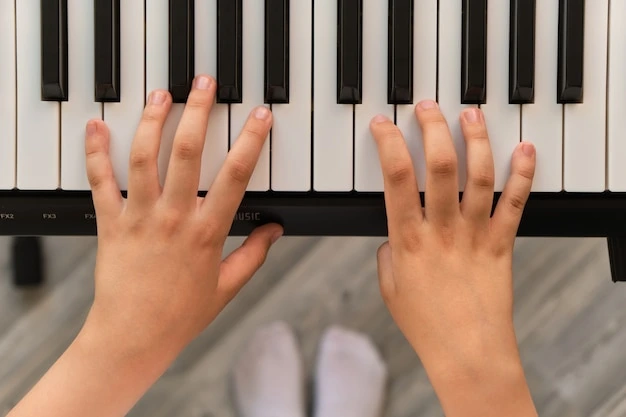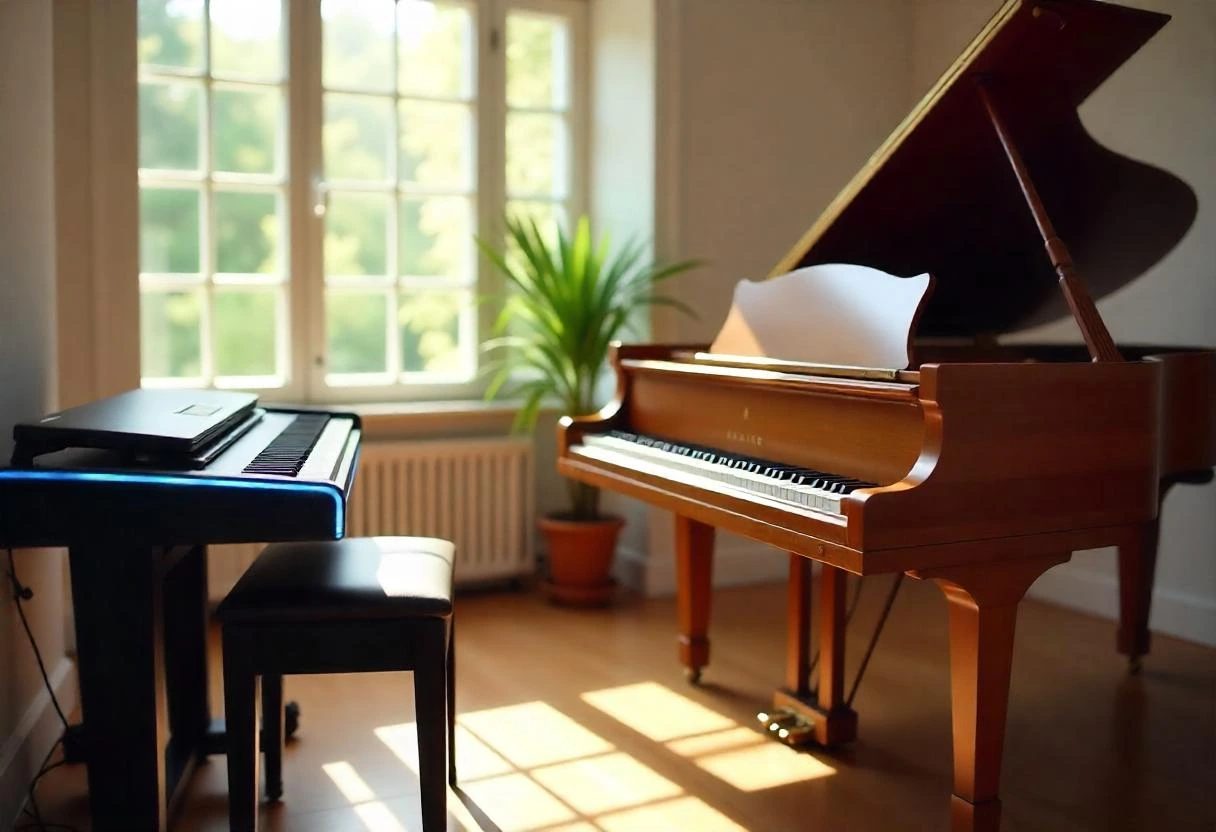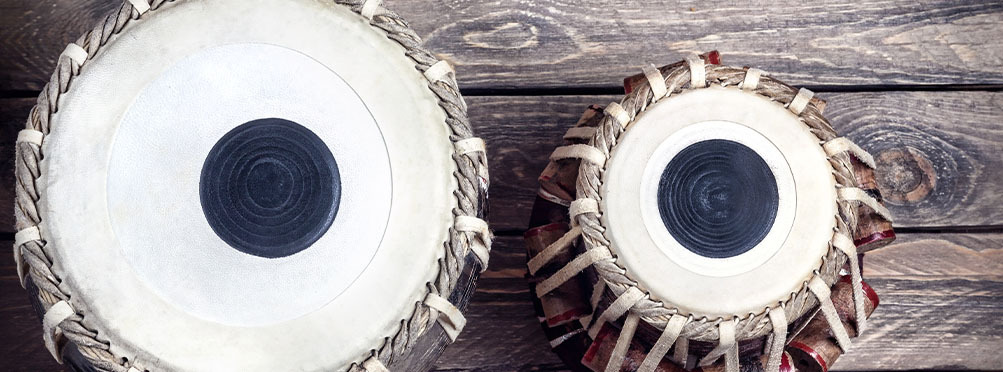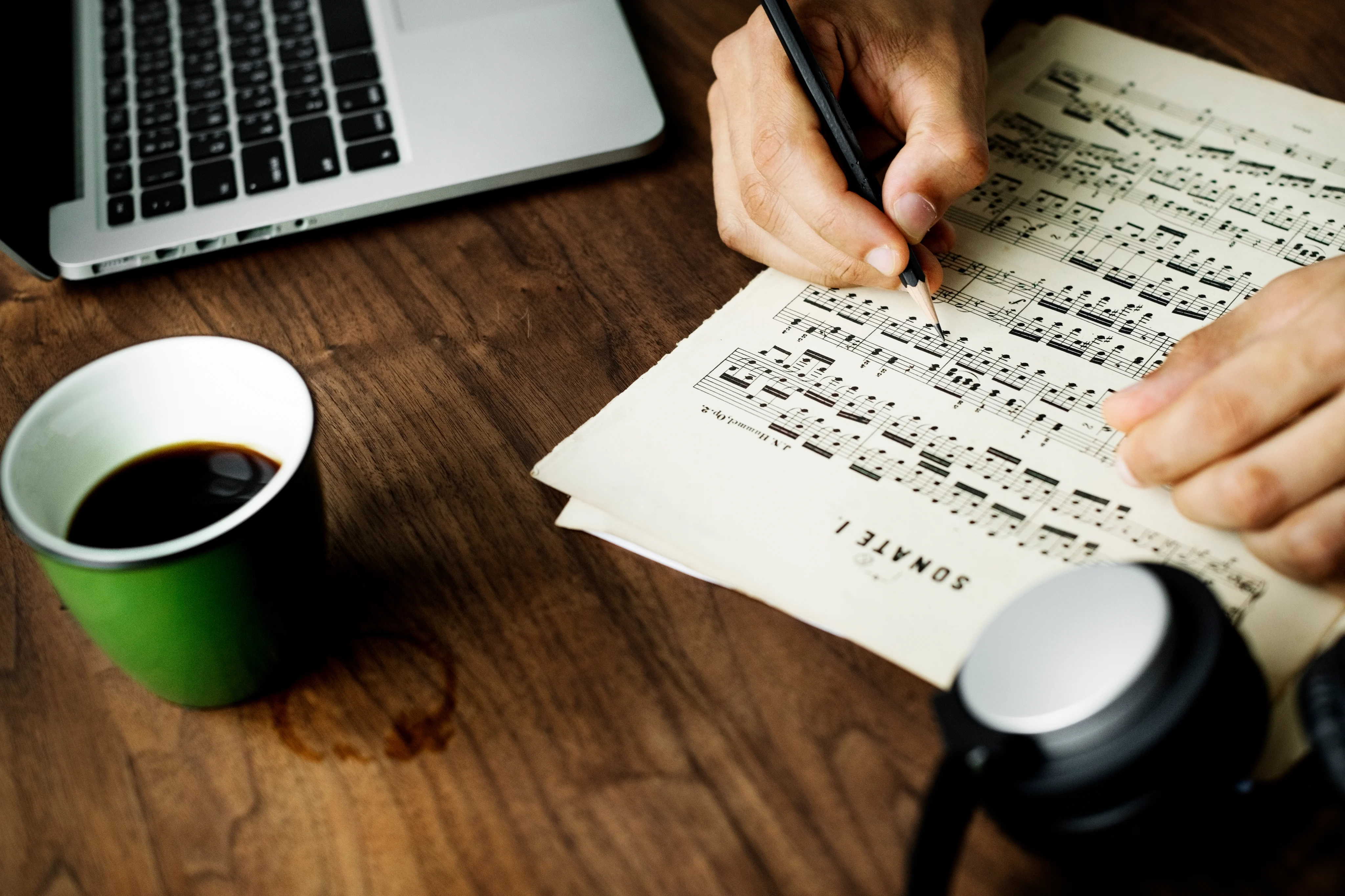Learning to play piano is a rewarding experience which not only improves the skill set but also enhances creativity. Whether you are a complete beginner or an advanced learner, finger exercises are the most crucial and fundamental part of a piano player. These exercises will help develop finger dexterity, flexibility, coordination and independence.
Why Finger Exercises Are Essential for Pianists
One of the most fundamental techniques in piano playing is the finger exercise. It is not just about building speed in playing but the key to improving overall techniques. By practising finger exercises beginners will gain the advantage of –
- Develop strength in each finger and the independence to play complex pieces.
- Improve hand-eye coordination and the ability to play separate rhythms or melodies with each hand.
- Increase Flexibility to make your fingers stretch and move fluidly across the keys.
- Build Muscle Memory by helping your hands and fingers remember movements, making it easier to play challenging pieces with accuracy.
These foundational skills can make a significant difference in your ability to play more complex music down the road.
Warm-Up Before Starting Exercises
Piano playing requires the incorporation of your hand and fingers, therefore it is necessary to stretch your hands and prepare your muscles for the work ahead. Try some of these simple steps to warm up:
- Get the blood flowing by gently stretching your fingers, palms, and wrists.
- Open and close your hands, then press each finger against your thumb to stretch them individually. Finger flexing will improve flexibility and joint mobility.
- Start off your exercise with a few scales at a slow tempo to warm up your fingers before jumping into intense exercises.
Warming up properly will relax your muscles and can prevent injury. Also it will ensure that you’re ready for effective practice.
Top Piano Finger Exercises for Beginners
We have discussed the importance of finger exercises for pianists. Now let’s delve into the right kind of exercises to kickstart your journey as a pianist:
- Five-Finger Beginner Piano Exercises: Use each hand to play five consecutive notes (C-D-E-F-G) ensuring that all fingers, especially the weaker ones (ring and pinky), are used equally. Start off slow, then gradually increase the speed while maintaining control.
- Hanon Exercises: The Hanon exercises are specifically designed to strengthen fingers and improve finger independence for accuracy and precision. These exercises can be easily integrated into practice sessions.
- Scales and Arpeggios: Scales and arpeggios help with finger dexterity and hand coordination. It also improves evenness of touch, balance and tone. Practice with a simple C major scale, then work up to more complex keys and arpeggios.
- Thumb Under Practice: Smooth thumb transitions are crucial when playing scales and runs. A very good exercise for thumb mobility is to play a scale with the thumb and one other finger in alternation.
How to Incorporate Finger Exercises into Daily Practice
Consistency is key to progress and a structured routine will make it easier to maintain the schedule. Incorporate the following steps into your daily practice session:
- Start your practice session with beginner piano finger exercises for about 5-10 minutes to warm up and get your fingers moving.
- Focus your exercises on clean, precise movements and build up speed as you gain control and strength. It is better to have quality playing rather than speed.
- Work on alternate hand exercises to build independence and finger coordination.
- Set a goal for each practice session. For instance, aim to increase your speed by a small increment or play a challenging scale more smoothly.
How to Balance Finger Exercises and Daily Piano Practice as a Beginner
Maintaining balance is an ideal goal in life, and the same applies to pianists. Holding a steady practice routine that is balanced between finger exercises and learning pieces will boost your progress. Try to integrate exercises into your routine by –
- Manage your time by setting aside at least 10-15 minutes of your practice session for finger exercises. This way, you’re consistently building strength and flexibility without taking too much time away from learning new songs.
- Do not be rigid in practising your exercises, instead rotate between different types of finger exercises to keep your practice engaging and to target different aspects of your technique.
- Using a Metronome will help you maintain consistent rhythm, and slowly build up speed while sustaining control.
- It is always a good idea to journal your practice as you can note improvements in speed, accuracy, and finger strength. Seeing progress is motivating and helps you stay consistent.
Conclusion
Piano is played with fingers, therefore your fingers should have the strength and flexibility to stretch and hold the keys. And to achieve such dexterity one should focus on finger exercises tirelessly. Whether you’re a beginner or an advanced player, incorporating finger exercises into your daily routine can drastically improve your finger strength, coordination, and overall playing ability. So, start small, stay patient, and watch your skills grow as you make finger exercises a regular part of your practice.
















